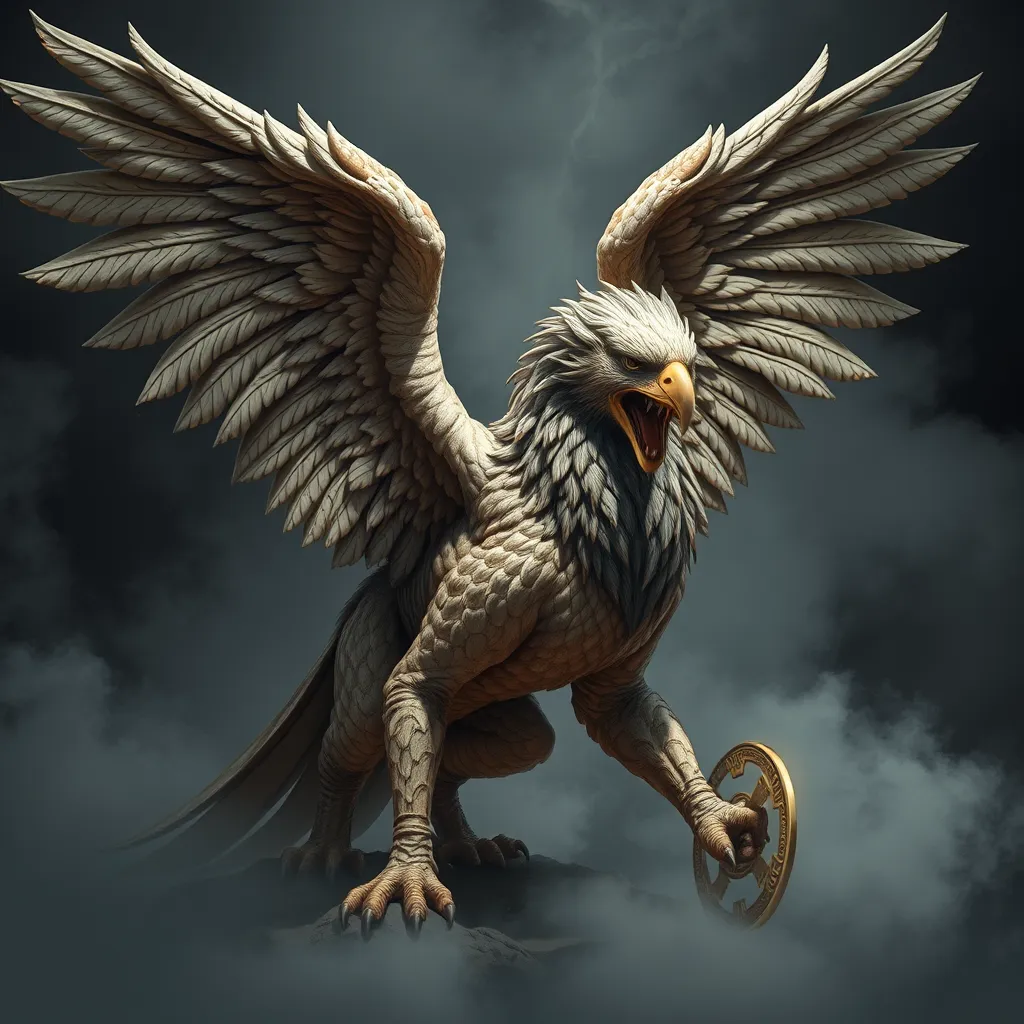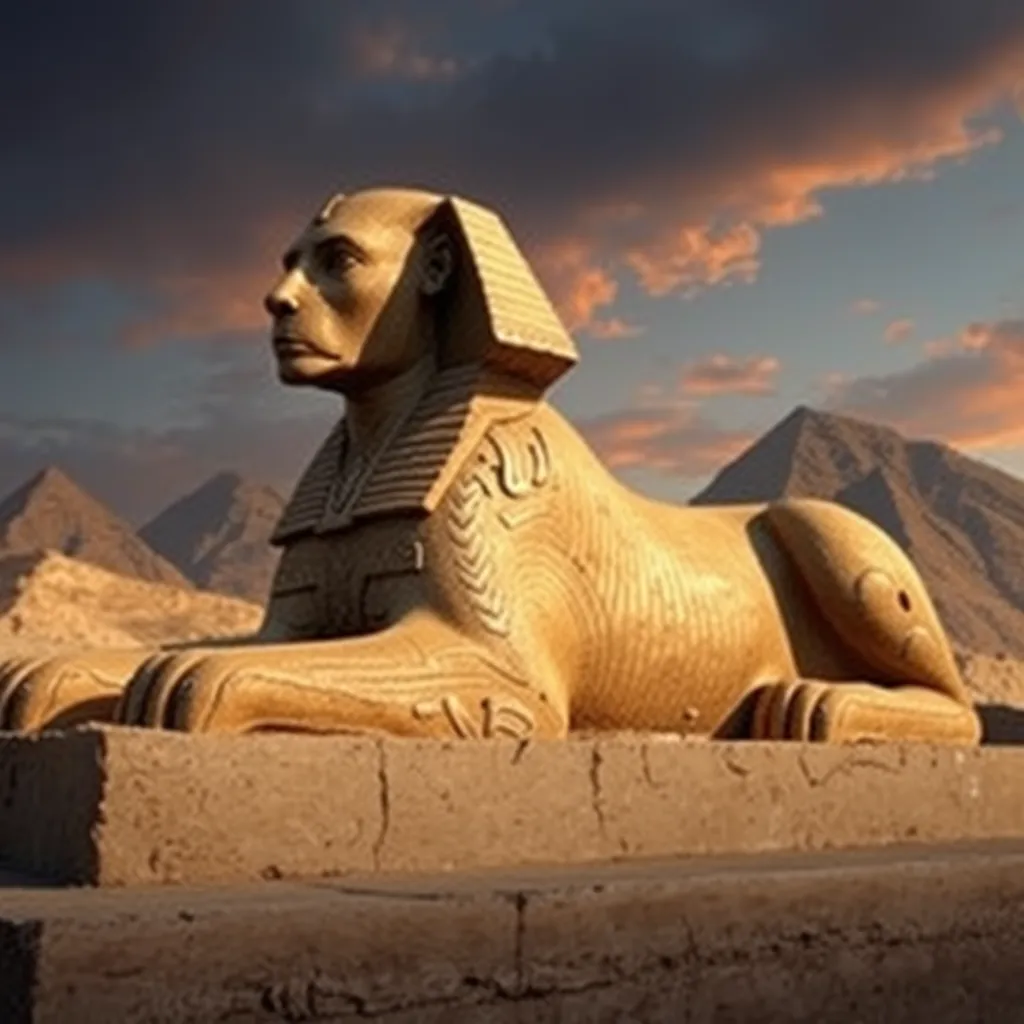Avian Majesty and Feline Fury: The Griffin in Roman Poetry and Imagery
I. Introduction
The griffin, a majestic creature with the body of a lion and the head and wings of an eagle, has captivated the imagination of cultures throughout history. Originating from ancient mythologies, this hybrid beast symbolizes a powerful blend of strength and wisdom.
In Roman culture, the griffin held significant importance, often representing divine protection and authority. Its presence in art and literature reflects the Romans’ fascination with mythological beings and their attributes.
This article aims to explore the representation of the griffin in Roman poetry and imagery, examining its symbolic meanings and cultural significance.
II. The Griffin as a Symbol of Power and Protection
A. Mythological Roots of the Griffin in Ancient Civilizations
The griffin’s origins can be traced back to ancient civilizations, including the Mesopotamians and Egyptians, where it was often depicted as a guardian of the divine. In these cultures, the griffin was seen as a protector of treasures and sacred places, embodying both the ferocity of a lion and the vigilance of an eagle.
B. Role of the Griffin in Roman Mythology and Beliefs
In Roman mythology, the griffin was commonly associated with the gods and goddesses, often depicted as a creature of divine power. Romans believed that griffins served as protectors of the underworld and the afterlife, linking them to themes of protection and guardianship.
C. Analysis of the Griffin as a Guardian Figure
The griffin emerged as a guardian figure in various contexts, symbolizing the protection of both physical and spiritual realms. Its dual nature allowed it to embody the qualities of both the earth (lion) and the sky (eagle), reinforcing its role as a sentinel of balance and harmony.
III. The Griffin in Roman Poetry
A. Prominent Roman Poets Featuring the Griffin
Several renowned Roman poets featured the griffin in their works, using it as a powerful symbol to convey deeper meanings.
- Virgil’s “Aeneid”: In this epic poem, the griffin is mentioned as a symbol of strength and divine protection, representing the glory of Rome.
- Ovid’s “Metamorphoses”: Ovid employs the griffin in various transformations, illustrating its multifaceted nature and its role in the interplay of human and divine realms.
B. Themes and Motifs Associated with the Griffin in Poetry
The griffin in Roman poetry often embodies themes of heroism, protection, and the intersection of the mortal and divine. It serves as a metaphor for the aspirational qualities that Romans admired, such as bravery, wisdom, and vigilance.
C. Interpretation of the Griffin’s Symbolism in Literary Context
In literary contexts, the griffin can be interpreted as a reflection of the Roman ideal of governance and authority. Its attributes symbolize not only physical strength but also the moral and ethical responsibilities of leadership.
IV. Artistic Representations of the Griffin
A. Overview of Griffin Imagery in Roman Art
The griffin appears frequently in Roman art, often depicted in various forms such as sculptures, mosaics, and decorative motifs. Its presence in art reflects the cultural significance placed on this creature as a symbol of power and protection.
B. Notable Examples of Griffin Sculptures and Mosaics
Some notable examples of griffin representations in Roman art include:
- The griffin mosaic from the Villa of the Emperor Hadrian, showcasing intricate designs and vibrant colors.
- Sculptures found in the ruins of Pompeii, which capture the dynamic posture and majestic qualities of the griffin.
C. The Griffin in Decorative Arts: Pottery and Coins
The griffin was also a popular motif in Roman pottery and coins, often used to signify wealth and status. Decorative pottery featured griffins as part of elaborate designs, while coins bore images of griffins to represent the power of the issuing authority.
V. The Griffin in Roman Architecture
A. Use of Griffin Imagery in Public and Religious Buildings
Griffin imagery was prominently featured in Roman public and religious architecture. These representations served to convey messages of protection and divine favor for the structures they adorned.
B. The Griffin as an Architectural Element: Columns and Friezes
In architectural designs, griffins were often incorporated into columns and friezes, enhancing the grandeur of buildings. They symbolized strength and vigilance, characteristics deemed worthy of Roman public spaces.
C. Case Studies: Specific Structures Featuring Griffin Motifs
Examples of structures featuring griffin motifs include:
- The Temple of Apollo at Delphi, where griffins were depicted in friezes, symbolizing divine protection.
- The Baths of Caracalla, showcasing griffin mosaics that decorated the floors and walls, enhancing the aesthetic and symbolic appeal of the space.
VI. Cultural Significance of the Griffin in Roman Society
A. The Griffin as a Status Symbol in Roman Life
The griffin became a status symbol among the Roman elite, representing power, wealth, and protection. Those who displayed griffin imagery in their homes or possessions often sought to convey their high social standing.
B. The Griffin’s Role in Roman Warfare and Heraldry
In warfare, the griffin was used as a heraldic symbol, representing bravery and valor. Armies would adopt griffin insignias on their banners to invoke the creature’s protective qualities during battles.
C. Popularity of Griffin Imagery in Roman Daily Life
Beyond the elite, griffin imagery permeated Roman daily life, appearing in everyday items like jewelry, household goods, and clothing, reflecting the creature’s widespread appeal and significance.
VII. The Legacy of the Griffin in Later Art and Literature
A. The Griffin’s Influence on Medieval and Renaissance Art
The griffin continued to influence art and literature in the Medieval and Renaissance periods, often appearing in illuminated manuscripts and tapestries as a symbol of strength and vigilance.
B. Evolution of the Griffin in Modern Interpretations
In modern interpretations, the griffin has evolved into a popular figure in fantasy literature and art, often depicted as a noble creature embodying the qualities of bravery and wisdom.
C. The Griffin in Contemporary Culture and Media
Today, the griffin remains a prominent figure in various forms of media, including films, video games, and literature, symbolizing the intersection of myth and modern storytelling.
VIII. Conclusion
A. Recap of the Griffin’s Importance in Roman Poetry and Imagery
The griffin stands out as a significant symbol in Roman poetry and imagery, embodying themes of power, protection, and the divine. Its illustrious presence in the works of poets like Virgil and Ovid illustrates its multifaceted nature.
B. Reflection on the Enduring Appeal of the Griffin
The enduring appeal of the griffin lies in its rich symbolism and the universal qualities it represents, transcending time and cultural boundaries.
C. Final Thoughts on the Intersection of Myth, Art, and Society in Roman History
In conclusion, the griffin serves as a powerful reminder of the interconnectedness of myth, art, and society in Roman history, continuing to inspire awe and admiration in contemporary culture.



